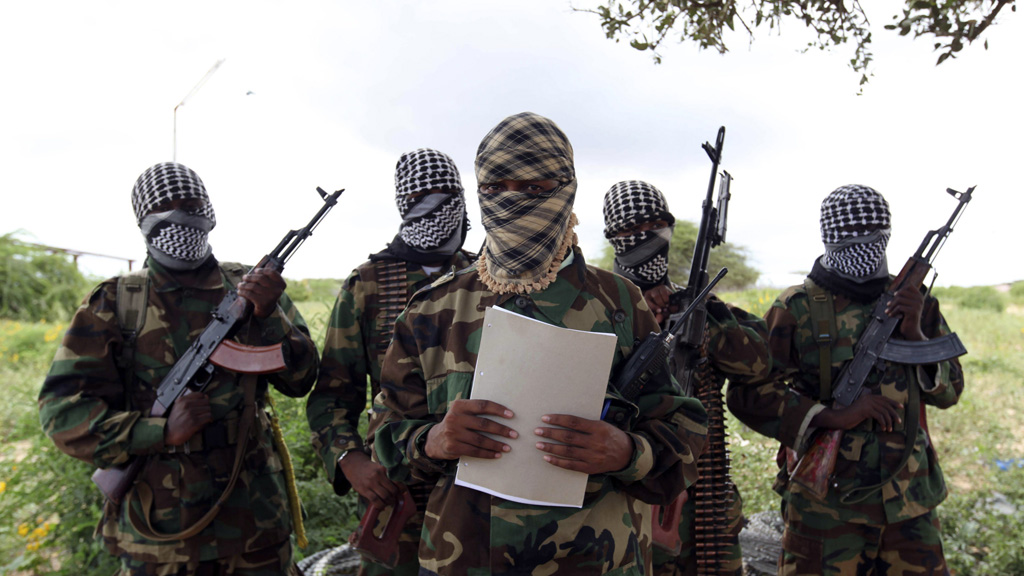Al-Shabaab: using social media to fight the jihad
 Jamal Osman
Africa Correspondent
Jamal Osman
Africa Correspondent
Last month’s terror attack at the Westgate shopping centre in Kenya showed how media-savvy al-Shabaab is. As Jamal Osman writes, the jihadist group’s media office is small but determined.

The latest video by al-Shabaab (members of whom are seen above, in a photograph taken in Mogadishu in 2011) demonstrates how difficult it is to stop them from getting their side of the story to an international audience.
Western governments have invested millions in order to discredit the Islamist group and turn people against them. In particular, the US and EU fund some local media and also influence international journalists.
That appears to have achieved some success. When it comes to the overall propaganda war, the west has the upper hand. Al-Shabaab fighters are not as popular as they used to be, at least within the diaspora community.
The hour-long video, entitled “Woolwich: an eye for an eye”, was designed for western audiences, and especially British people. It was in response to the killing of Lee Rigby in Woolwich early this year.
Getting it out there
An intense cyber-confrontation took place before the video appeared. Al-Shabaab’s media department wanted to post the material online, while western authorities were trying very hard to stop them from achieving that.
Initially, al-Shabaab attempted to share the video through jihadist forums. There are many of them, of course, but every time they uploaded, it was getting deleted. Some of the forums were shut down. Journalists desperate for the video went on to social media looking for the video.
When I asked al-Shabaab about it, the answer came back: “They (western authorities) keep on deleting it. But we’ll get it out there.” And they did.
Quickly, websites that monitor the activities of global jihadist movements were showing the material. On some it was deleted within hours, possibly after western agencies requested them to do so.
Eventually, after hours of struggle, al-Shabaab managed to get the information on to the big virtual world. Then it was just a matter of searching the internet, and dozens of answers were coming up.
Media war
For al-Shabaab, this was an important achievement in the long-running media war between them and western governments. However, this is not the first time al-Shabaab have won this kind of battle.
During the Westgate attack, they were updating the event through Twitter. Several of their accounts were shut down, only to reopen using a different name. “It doesn’t cost us money,” an al-Shabaab official told me. “So we’ll open a new account.”
Al-Shabaab joined Twitter in December 2011. It was to counter Kenya’s military spokesman Major Emmanuel Chirchir, who was updating journalists and the public through Twitter after his forces invaded Somalia.
Soon afterwards, al-Shabaab’s English speakers were mocking his messages, highlighting his grammatical errors and poor use of English.
Read more: Hero's life awaits al-Shabaab's Westgate suspects
Thousands of followers
Another online triumph for al-Shabaab came when Major Chirchir posted old photos of a man being stoned to death in Somalia and claimed it was al-Shabaab that carried out the barbaric stoning. But it had nothing to do with them.
Many Kenyans were angered by how far the propaganda war went. And the spokesman was criticised for making false statements.
Currently, al-Shabaab do not have a Twitter account (so far, eight accounts have been suspended) but they will set up one when they feel the need to do so. Within hours of opening an account, they will have thousands of followers.
There seems to be huge interest in their activities, and they hit back when people write misleading articles about the group.
“Since we added our communication strategy in English, the western media has minimised their lies about us because they know we’ll expose them,” they told me.
Read more: Al-Shabaab - 'Foreigners are not safe in Kenya'
Easily accessible
Of all al-Qaeda Islamist groups across the world, al-Shabaab are probably the most accessible. Al-Kataaib is a department dedicated to dealing with the media.
They have local radio and online presence. Many journalists who cover the east Africa region can reach them through email or phone. Al-Shabaab spokesmen give live interviews to local and international media.
Like any communication officers, the al-Shabaab press team use catchy phrases and interesting sound bites to get the attention of the media. For instance, in the last video, this line was used by most of the media: “If you can’t afford to get hold of one of these (pointing to his AK47), then certainly a simple knife from your local B&Q will do the job.”
With a huge media campaign against them, the jihadist group does not have the same support that it had in the early years.
But they don’t give up. Al-Shabaab do not have the financial muscle and facilities of their counterparts in the west. But their media officers are hard-working, well-educated and determined men. And as long as they are making small yet significant victories, they will continue their online battle.
As one al-Shabaab official told me: “No-one can silence us. There are so many options.”